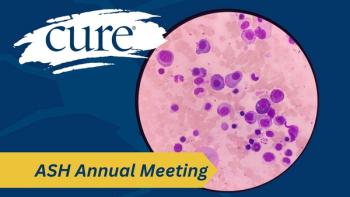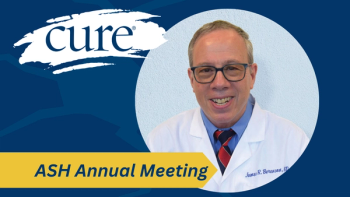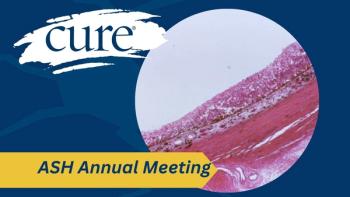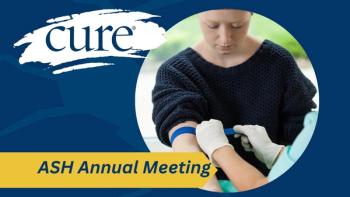
- CURE® Spring 2021 Issue
Shattering Myths: How Patients With Cancer Can Become Better Health Advocates

There are two myths that patients with cancer believe when it comes to being health advocates. Here, a panel of experts look to dispel those myths to help patients become better advocates.
Patients with cancer need to rid themselves of certain beliefs to be better advocates for their health and the health of others, according to Dr. Carolyn McClanahan.
“When we think of advocacy, to me, the biggest mistake people make in not doing advocacy is (for) two reasons,” McClanahan, a physician, financial planner and founder of Life Planning Partners, said during the DONNA Foundation’s How to be Fearless Virtual Seminar. “(People) think their voice doesn't matter and they think advocacy takes a lot of time. This is so untrue.”
During the seminar, McClanahan; Rebecca Kirch and Nicole G. Braccio, both from the National Patient Advocate Foundation; and Mike Panetta of Beekeeper Group, discussed how patients with cancer can be better advocates for themselves and others.
The goal of the session, McClanahan said, was to “shatter those two myths.”
McClanahan: Rebecca, what are the opportunities for patients and their families to influence health policies that matter to them?
Kirch: One thing that we've learned at the National Patient Advocate Foundation (NPAF) is (that) before we even get to the place of accessing health care, any kind of serious illness can cause all sorts of financial distress. You've probably heard that in the context of your work in addition to your medical career, but person-centered care is something that needs to happen everywhere. And the way that we think about it is it's a matter of focusing on what patients and their caregivers need as people. Because first and foremost, people want to be treated as people; treat the person beyond their disease. So, the focus of helping all sorts of influencers, whether it's legislators or health systems, as you mentioned, the different types of audiences, for the patient and caregiver voice, helping build that echo chamber of understanding. You're right, it doesn't take a lot of time.
It just takes that committed steady drumbeat of the same message for change, and that builds the echo chamber. That's certainly what National Patient Advocate Foundation tries to advance through its advocacy program in helping support advocates like you in having the opportunities to be influencers of change.
McClanahan: Nicole, share some real-world examples about what people have done to advocate and their successes.
Braccio: It’s a very timely point to talk about a campaign that we just finished up in the fall but is coming back. (The) Get Covered campaign is one of NPAF’s community campaigns. The focus is on helping people understand the importance of health insurance, and how to pick the best plan for them. Our campaign largely started around the Affordable Care Act exchanges, but we've also weaved in Medicare (and) open enrollment since the two overlap and then with starting the new special enrollment period for the (Affordable Care Act) exchanges. This is a great campaign that a lot of our volunteers have been involved in for several years. And I'll share some of the examples of what people have done to help talk about the importance of health insurance.
So pre-pandemic, our volunteers held in-person info sessions in their communities; they posted flyers in places like grocery stores and churches, driving people to the government sites to purchase health care, such as healthcare.gov and the Medicare plan finder. And they also share this information with doctors’ offices.
So, it was truly a community effort in that people were identifying places and friends, family, neighbors that they thought could benefit from this information. And, you know, went out and conquered. And recently, over the past year, and with this last campaign in the fall, everything was virtual. Some great examples involved our volunteers who created Facebook pages and really built their online communities and helped to drive people to the government sites that I mentioned, as well as guides that we at NPAF built to help people determine which plan to choose.
Our plan guides are kind of a step-by-step, here's what you need to do and think about, around what aspects of health insurance are important to you. So, prioritizing your needs, as well as helping to compare between plans and learn about what's out there and how to make that decision. Because we all know it can be very complicated, even for the most intelligent of us to figure out how to choose that one plan out of so many. And while it's not easy to quantify this work, we have, as Rebecca mentioned, that echo chamber with many other advocacy organizations in the field. So, we know that the success of the 2021 open enrollment period has surely been impacted by all the volunteers and advocates who raise their voice to talk about health insurance with people in their communities.
McClanahan: Mike is going to share with you tips and tools and how to effectively engage with politicians and other stakeholders.
Panetta: At Beekeeper Group, we do a lot of work with different patient advocacy organizations in their efforts. And the things that I like to focus on when we talk about advocacy and engaging with stakeholders is really the need for personalized stories. We find that's the most effective tool; there's great research by the Congressional Management Foundation that shows that (personalized stories) are the No. 1 thing that changes the minds of decision makers in Congress, and I'm sure at the state level as well.
During the pandemic, I've been watching a lot of “Parks and Recreation,” and there's a great quote by Leslie Knope, and she says something along the lines of, “the only things I have on my side are facts and science, and people hate facts and science.” So, I joke that that's a great quote, because one of the things I always (tell the) groups that we work with is that facts are cheap. Everybody has facts. And I'm not saying they're not important, but everybody can have facts. If you're getting into an argument, and you're debating just on pure facts, you're never going to be as strong as if you're coming in with personalized stories. And the reason that we focus a lot on using stories in our advocacy is because they affect the different parts of the brain, there's this concept called narrative transportation in when you tell somebody a story, their guard goes down, and they're more apt to change their mind and have empathy with the characters that are in that story.
Having your advocates find ways to collect those stories and get those stories to decision makers is hugely important in the work to affect public policy. Those are the things that really change the hearts and minds. So, when we work with advocacy organizations, there's a number of ways to influence Congress to influence the decision makers and legislators. There are great tools that are out there now. The things that we work on specifically are driving email messages to decision makers. It's great entry level action. These tools are important, because they match you to your specific legislators, which is key. All members of Congress and all politicians live and die by the feelings of their constituencies.
Another thing that we're seeing a lot more of these days, (which) has been going on for years, is the engagement on social media and specific legislative engagement on social media. What I mean by that is tagging the legislator on Facebook, Twitter or whatever platform they're on. When that happens, it hits their office in a different way. If you send a letter to a member of Congress that goes through their normal legislative channels; we find that when you do something like this on the social media side of things, it goes to the communication side of the House. So, you're sort of hitting on two fronts; you're coming through the regular channels of advocating through the platforms that collect constituent engagement, and then you're advocating publicly on social media channels. And by specifically tagging the legislator, their office gets pinged on that, and that's something that gets reported up the chain to the decision maker. I like to describe it as the 21st century equivalent of a letter to the editor because it's public, and it's out there, and everybody can see it.
One thing that we always like to encourage our groups to do as well is (be as) specific as you can be with a bill number where something is in committee status, because remember, this is all going through staff filters. The more that you can, make it easy for the staff to take the next step to their boss. Also, publicly thank the people who are on your side, who are your champions; thank them for their leadership, thank them for their engagement. Do that publicly on social media, include photos of them if you can; the more that you can deepen that relationship, especially in this time of pandemic where it's hard to have those in-person meetings, to show who that you're backing the people who support you.
McClanahan: Rebecca, where can patient voices other than just talking to your politicians be influential?
Kirch: The short answer is everywhere with everyone. It starts with yourself. Self-advocacy is important, and it can be very intimidating in a doctor's office (or) a legislative meeting. Oftentimes, patients and caregivers can feel a bit overwhelmed or intimidated by the difference. It's a whole different experience and landscape for them. But what I will say that's so important for patients and families to know about advocacy is you are your own expert of your lived experience. And you need to think of yourself and equip yourself with organizations like DONNA Foundation (and) National Patient Advocate Foundation; we all have resources to help you feel more confident. Just like Beekeeper (Group) has tools to help people practice their narrative and tell their story.
You have a whole community; you're not alone in doing this sort of advocacy. The other secret is, it's becoming more and more interesting and there's more reception to patient and caregivers speaking out. You move from confidence to demanding what's right and bringing person-centered care to the forefront. There are opportunities to be on hospital, patient and family advisory councils (and) to be participants in research studies or be advisors on those research studies to keep them true to their ultimate objective, which is improving the quality of care for people.
Health systems often (will) speak their own language. And we have to join together as a community of advocates to say, “You know what, your ultimate customer really is us. And that expertise that we bring about what the experience was, what could be different about it.” If there were anything to take away, our volunteers have said feeling heard and understood in every setting is their top priority. And if they're not getting that as a measure of quality for them, then the health system isn't doing its job; the medical and nursing, social work community needs to help join with patients to make sure they’re feeling heard and understood is the No. 1 aspect of good quality care, and an advocacy message to shout from every rooftop among legislators, among hospital administrators, among researchers, among those that are developing the quality measures so that we actually measure (if) people (have) been trained to elicit from patients and families what matters to them most. When you think of that expertise that you bring, then it's much less daunting, the notion of calling and asking for change.
McClanahan: Nicole, you're going to share with us resources for people so that they do feel more confident in raising their voice.
Braccio: An overarching resource that can help patients, caregivers and their families feel confident is the community in and of itself, among other advocates. When we bring advocates together for a variety of initiatives that NPAF hosts, we overwhelmingly get the response from people that, you know, it was just so great to be in a room or be at a place where other people understand my experience. That camaraderie among advocates goes farther than you would think. And then particular resources that we've built as part of our campaigns and as part of all the advocacy work that we do, education is sort of No. 1, and communication would be the second.
We've built worksheets and resources on how to talk to your doctor (and) to your congressperson about what matters to you. We all know about white coat syndrome and people feeling like they don't have enough time to share what really matters. So, we have resources that kind of prompts a few questions and things that you have every right to ask your physician, as well as other stakeholders. And then the other piece, that with all our campaigns, we like to link it to a specific policy issue or reform issue.
For our Get Covered campaign, we had a toolkit that has evolved over the years, and has social media copy that people can personalize and share it with their online communities. And, you know, a coordinated effort among all the advocates in our grassroots network to act on specific days. And then I'll just touch on one last point, because Mike brought it up earlier around story collection. And we agree that is absolutely the No. 1 way to get your point across and to generate interest among policymakers and others. We have thought about different story prompts and sort of interview questions that we would like our advocates to answer, as well as a platform to help them collect their stories, and send them to us.
For more news on cancer updates, research and education, don’t forget to
Articles in this issue
over 4 years ago
Our Microbiome: A Reflection of Ourselves?over 4 years ago
You May Have Second Thoughts When Receiving a Cancer Diagnosisover 4 years ago
Making Strides in Ovarian Cancerover 4 years ago
Tag Teaming Liver Cancer Careover 4 years ago
Positive Thinking Is Powerful During and After Cancer Treatmentover 4 years ago
Advances in Second Opinions For Cancer Treatment Decisions




